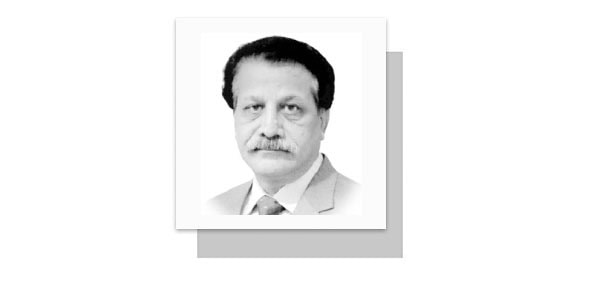PAHALAGAM incident raised serious questions regarding failure of security and intelligence setup of India while direct air strikes across international border against a nuclear armed neighbour cast serious doubts about rationality of Indian leadership.
Pakistan’s befitting response and rendering bloody nose to the Indian misadventure during the four-day war has opened flood gates of newer subjects in geopolitical, geo economic and geostrategic domains.
Shooting down of over half a dozen frontline modern fighters by PAF in a single combat mission badly hurt Indian ego while destruction of its Air Bases, BrahMos storage sites and S-400 missile defence shield badly exposed its false sense of security.
On one side, this short war has rewritten rules of the military game, while on the other side, it has redefined geopolitical parameters in South Asia.
Geostrategy took precedence over geopolitics with geo-economics being relegated to the last tier.
During this crisis, on one hand, the idol of Indian national power and notion of invincibility laid shattered while on the other hand, its decades earned regional and global relevance was rendered irrelevant.
Adventure turned into misadventure, dreams turned into night mare and the issue of Kashmir once again took the centre stage.
After all, this was not what India wanted.
So, what went wrong?
Where did India falter?
Let’s have a critical assessment of the geopolitical and geostrategic environment unfolded so far.
Since BJP’s ascendency into power and formation of government in the centre, PM Modi orchestrated his power structure around seven pillars: (i) fostering and perpetuating anti-Pakistan sentiments amongst the general public as central theme of his election campaigns and using false flag operations to garner political mileage; (ii) exploiting information warfare domain by pampering Main Stream Media (MSM) to jingoism and Bollywood style extremist and radical narratives by using fake and false news; (iii) propagation of Golwalkar’s and Savarkar’s ideology of fascism by using ultra-right wing Hindutva as the socio-political tool that hinges upon India to be a country of the Hindus, ruled by the Hindus and for the Hindus thus suffocating living spaces for over 300 million non-Hindu population; (iv) marginalizing minorities and moving away from orthodox Indian policies of secularism and diversity; (v) propagating Akhand Bharat as the State policy and creating insecurity amongst the neighbors; (vi) nurturing aggressive and irrational national leadership that seems to believe in the highly inflated power potential of India and grossly undermines other country’s real power potential; (vii) and, crushing the political dissent by exporting terrorism to regional and trans-regional countries.
BJP employed this strategy to successfully influence its domestic populace to its false narratives.
As a case study, majority of the Indian population was made to believe that Wing Commander Abhinandan shot down a Pakistani F-16 aircraft in February, 2019 whereas, it was a blatant lie duly verified by the Lockheed Martin.
Likewise, Indian military’s outcry of two front war mantra was successfully used to fetch higher budgetary allocations which swelled from USD 40 bill in 2015 to nearly USD 80 bill in 2025, whereas, 770 million people lived under UN defined poverty line in India.
Similarly, India showcased its geopolitical and geo-economic relevance to brand itself as counter weight to China in the USA’s Indo-Pacific Strategy-2022 and won preferential treatment, huge Foreign Direct Investments (FDI), and flurry of defence and security agreements with the USA.
So on and so forth.
Nevertheless, in case of Pahalgam incident, old style play book did not work well for India.
Segments of Indian media, civil society and strategic community questioned security and intelligence failures and demanded arrest of the perpetrators.
While, fake photoshopped pictures of the incident were exposed by the international media.
Likewise, pro-government Indian MSM got badly exposed and lost its credibility when global media and eye witness accounts of the common Indian people could not verify false narratives and fake news.
Similarly, for the Western apologists, Indian misadventure got seriously backfired.
USA had to regress from its initial stance of ‘bilateral issue can be mutually resolved by both countries’ and hurried to intervene and announce the ceasefire.
Because results of the air combat on 6/7 May (first day of the conflict) had stunned the world.
PAF, through an integrated and truly network centric digital environment, successfully employed the concept of multi-domain operations, exploited the electromagnetic spectrum and shortened the sensor to shooter chain to achieve 6-0 victory against the most modern and numerically superior fleet of the Indian Air Force.
This remarkable feat was followed by shooting down dozens of drones, targeting IAF Air Bases, neutralizing S-400 SAM sites and destroying BrahMos storage depots.
Pakistan re-established deterrence while remaining within the bounds of conventional domain.
Results of this war have placed multi-tier effects on the reputation of Western Military Industrial Complex, USA’s grant of exceptionalism to India and on India’s potential to act as the counter weight to China.
Entire Indian state machinery including the media, diplomacy, military and internal populism suffered huge setbacks.
Stark differences surfaced between the civil and military leadership resultantly number of high-ranking military officials were sacked.
Indian dreams of being hyphenated with China turned into a night mare of being hyphenated with Pakistan.
India slipped from ‘no talks with Pakistan’ to requesting intervention and ceasefire which was well Trumpeted by the USA brokered Peace.
To conclude, it can be stated that four days war with Pakistan has awakened India to its real geopolitical and geostrategic potential.
It is now up to the Indian leadership to face the realities and initiate measures to coexist as equal and mutually respected neighbors or continue to pursue fantasies.
—The writer is a retired Air Officer from the PAF and currently serving at the DHA Suffa University (DSU), Karachi. (xahid31@gmail.com)


















